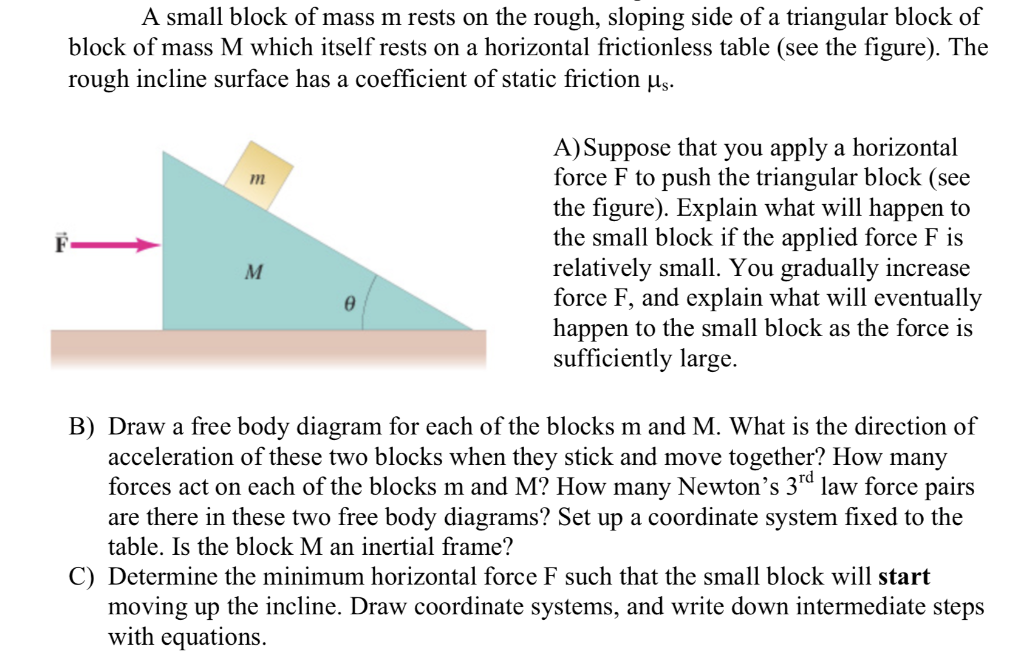A small block of mass m rests on the rough, sloping side of a triangular block of block of mass M which itself rests on a horizontal frictionless table (see the figure). The rough incline surface has a coefficient of static friction μs. A) Suppose that you apply a horizontal force F to push the triangular block (see the figure). Explain what will happen to the small block if the applied force F is relatively small. You gradually increase force F, and explain what will eventually happen to the small block as the force is sufficiently large. B) Draw a free body diagram for each of the blocks m and M. What is the direction of acceleration of these two blocks when they stick and move together? How many forces act on each of the blocks m and M? How many Newton's 3rd law force pairs are there in these two free body diagrams? Set up a coordinate system fixed to the table. Is the block M an inertial frame? C) Determine the minimum horizontal force F such that the small block will start moving up the incline. Draw coordinate systems, and write down intermediate steps with equations.
